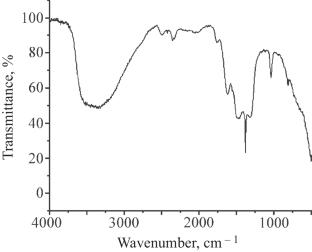反沉积法制备二氧化铈粉体的研究
IF 0.6
4区 材料科学
Q4 MATERIALS SCIENCE, CERAMICS
引用次数: 0
摘要
研究了用反沉积法制备CeO2粉末的工艺。所得产物中CeO2含量达到99.2% wt.%。主要相为立方晶格的二氧化铈。粉末的平均粒径约为42 μm,比表面积约为38.6 m2/g。材料从50°C加热到1200°C会导致18%的质量损失。这种质量损失伴随着吸热效应,在144,280和374℃的DTA曲线上出现峰值。进一步的研究方向包括优化所获得的材料的性质,特别是其形态,以及确定潜在的应用领域。本文章由计算机程序翻译,如有差异,请以英文原文为准。

Study of Cerium Dioxide Powder Obtained by Reverse Deposition Method
The process of manufacturing CeO2 powders by the method of reverse deposition is investigated. The CeO2 content in the resulting products reached 99.2 wt.%. The main phase was cerium dioxide with a cubic lattice. The average particle size of the powder was about 42 μm, and the specific surface area was about 38.6 m2/g. Heating of the material from 50 to 1200°C leads to a mass loss of 18%. This mass loss is accompanied by endothermic effects with peaks on the DTA curve at temperatures of 144, 280, and 374°C. Further research directions include optimization of the properties of the obtained material, in particular its morphology, and determination of prospective application areas.
求助全文
通过发布文献求助,成功后即可免费获取论文全文。
去求助
来源期刊

Glass and Ceramics
工程技术-材料科学:硅酸盐
CiteScore
1.00
自引率
16.70%
发文量
85
审稿时长
6-12 weeks
期刊介绍:
Glass and Ceramics reports on advances in basic and applied research and plant production techniques in glass and ceramics. The journal''s broad coverage includes developments in the areas of silicate chemistry, mineralogy and metallurgy, crystal chemistry, solid state reactions, raw materials, phase equilibria, reaction kinetics, physicochemical analysis, physics of dielectrics, and refractories, among others.
 求助内容:
求助内容: 应助结果提醒方式:
应助结果提醒方式:


